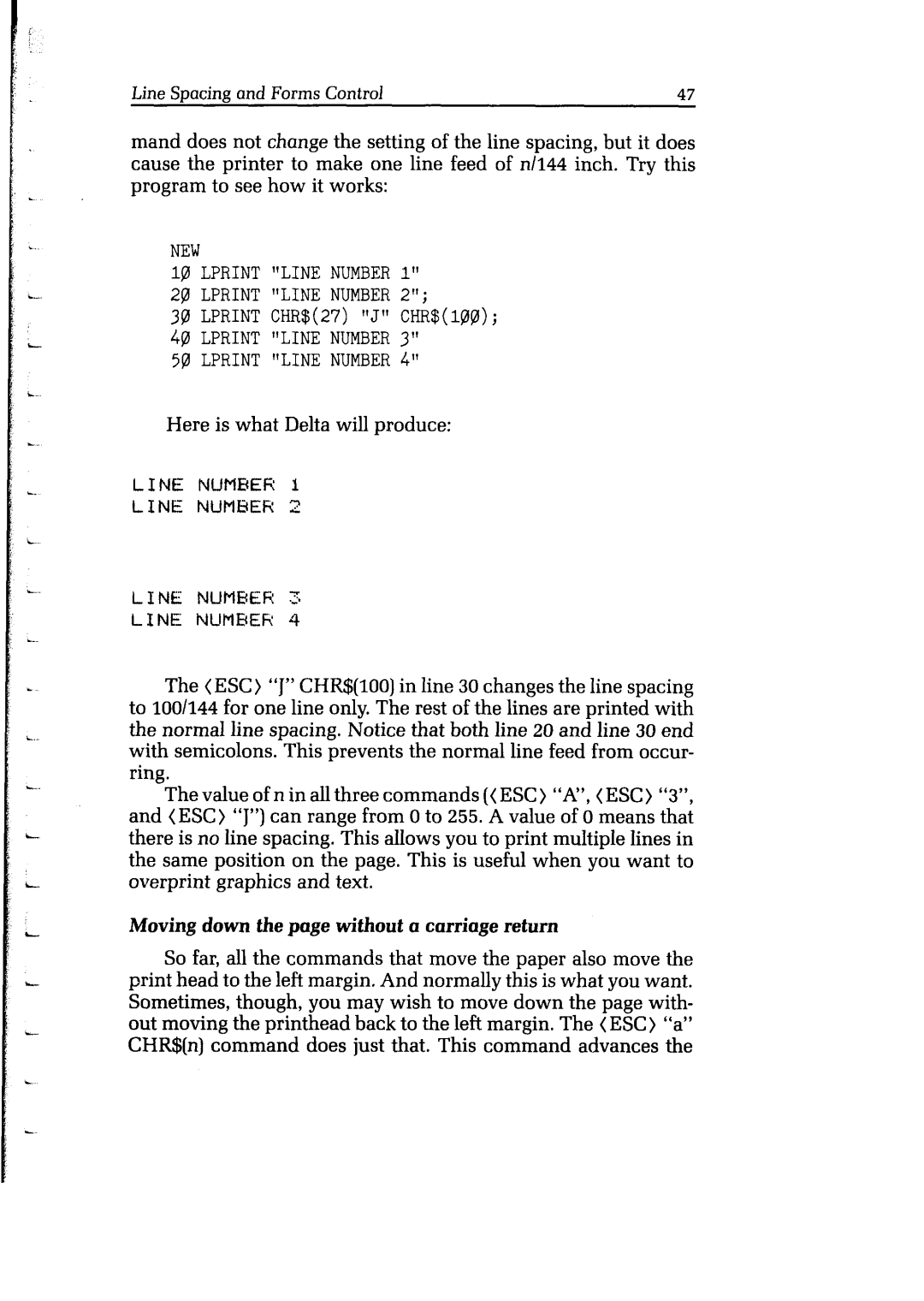
Line Spacing and Forms Control | 47 |
mand does not change the setting of the line spacing, but it does cause the printer to make one line feed of n/144 inch. Try this program to see how it works:
NEW
18LPRINT "LINENUMBER 1"
2g LPRINT "LINENUMBER2";
3pI LPRINTCHR$(27)"J" CHR$(l@d); 4pI LPRINT "LINENUMBER3”
5p LPRINT "LINENUMBER4”
Here is what Delta will produce:
LINE NUMBER 1
LINE NUMbER 2
LINE NUMBER 3
LINE NUMBER 4
The (ESC) “J” CHR$(lOO) in line 30 changes the line spacing to 1001144 for one line only. The rest of the lines are printed with the normal line spacing. Notice that both line 20 and line 30 end with semicolons. This prevents the normal line feed from occur- ring.
The value of n in all three commands (( ESC) “A”, (ESC) “3”, and (ESC) “J”) can range from 0 to 255. A value of 0 means that there is no line spacing. This allows you to print multiple lines in the same position on the page. This is useful when you want to overprint graphics and text.
Moving down the page without a carriage return
So far, all the commands that move the paper also move the print head to the left margin. And normally this is what you want. Sometimes, though, you may wish to move down the page with- out moving the printhead back to the left margin. The (ESC) ‘&a” CHR$(n) command does just that. This command advances the
